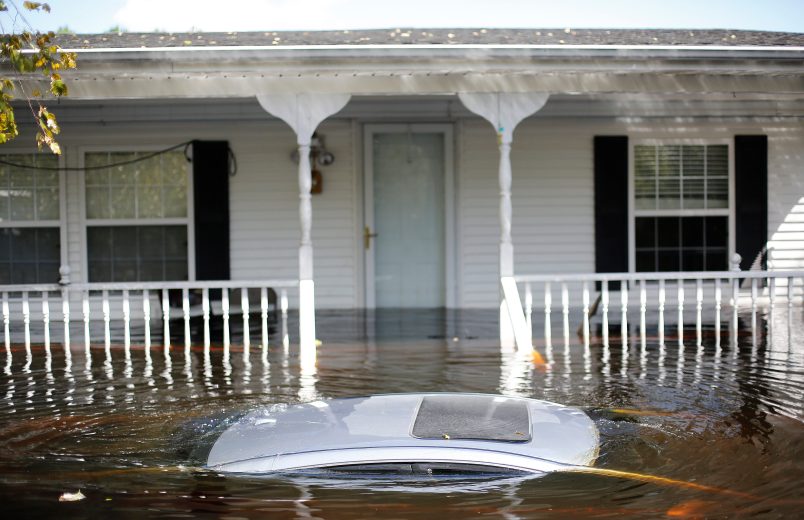WILMINGTON, N.C. (AP) — The death toll from Hurricane Florence climbed to at least 37, including two mental health patients who drowned when a sheriff’s van was swept away by floodwaters, and North Carolina’s governor pleaded with thousands of evacuees not to return home just yet.
President Donald Trump, meanwhile, arrived in storm-ravaged North Carolina on Wednesday, visiting a church in the hard-hit coastal of town New Bern where volunteers have been handing out food to storm victims.
Wilmington, population 120,000, was still mostly an island surrounded by floodwaters, and people waited for hours Tuesday for handouts of food, water and tarps. Thousands of others around the state waited in shelters for the all-clear.
“I know it was hard to leave home, and it is even harder to wait and wonder whether you even have a home to go back to,” Gov. Roy Cooper said.
After submerging North Carolina with nearly 3 feet (1 meter) of rain, the storm dumped more than 6.5 inches (16.5 centimeters) of rain in the Northeast, where it caused flash flooding.
Cooper warned that the flooding is far from over and will get worse in places.
“I know for many people this feels like a nightmare that just won’t end,” he said.
Addressing roughly 10,000 people who remain in shelters and “countless more” staying elsewhere, Cooper urged them to stay put for now, particularly those from the hardest-hit coastal counties that include Wilmington, near where Florence blew ashore on Friday.
Roads remain treacherous, he said, and some are still being closed for the first time as rivers swelled by torrential rains inland drain toward the Atlantic.
At least 27 of the deaths happened in North Carolina.
In South Carolina, two women died on Tuesday evening after a van taking the mental health patients from one facility to another was overtaken by rising floodwaters near the Little Pee Dee River, authorities said.
The risk of environmental damage mounted, as human and animal waste was washed into the swirling floodwaters.
More than 5 million gallons (18 million liters) of partially treated sewage spilled into the Cape Fear River after power went out at a treatment plant, officials said, and the earthen dam of a pond holding hog waste was breached, spilling its contents. The flooding killed an estimated 3.4 million chickens and 5,500 hogs on farms.
In Wilmington on Tuesday, workers began handing out supplies using a system resembling a giant fast-food drive-thru: Drivers pulled up to a line of pallets, placed an order and left without having to get out. A woman blew a whistle each time drivers had to pull forward.
Todd Tremain needed tarps to cover up spots where Florence’s winds ripped shingles off his roof. Others got a case of bottled water or military MREs, or field rations. An olive-drab military forklift moved around huge pallets loaded with supplies.
Brandon Echavarrieta struggled to stay composed as he described life post-Florence: no power for days, rotted meat in the freezer, no water or food and just one bath in a week.
“It’s been pretty bad,” said Echavarrieta, 34, his voice breaking.
About 3,500 vehicles came through for supplies on the first day they were available, county officials said in a Facebook post.
Supplies have been brought into the city by big military trucks and helicopters,
At Fayetteville, about 100 miles (160 kilometers) inland, near the Army’s sprawling Fort Bragg, flooding from Cape Fear River got so bad that authorities closed a vehicle bridge after the water began touching girders supporting the span’s top deck.
Fayetteville Mayor Mitch Colvin said it was unclear if the bridge was threatened.
“We’ve never had it at those levels before, so we don’t really know what the impact will be just yet,” he said.



